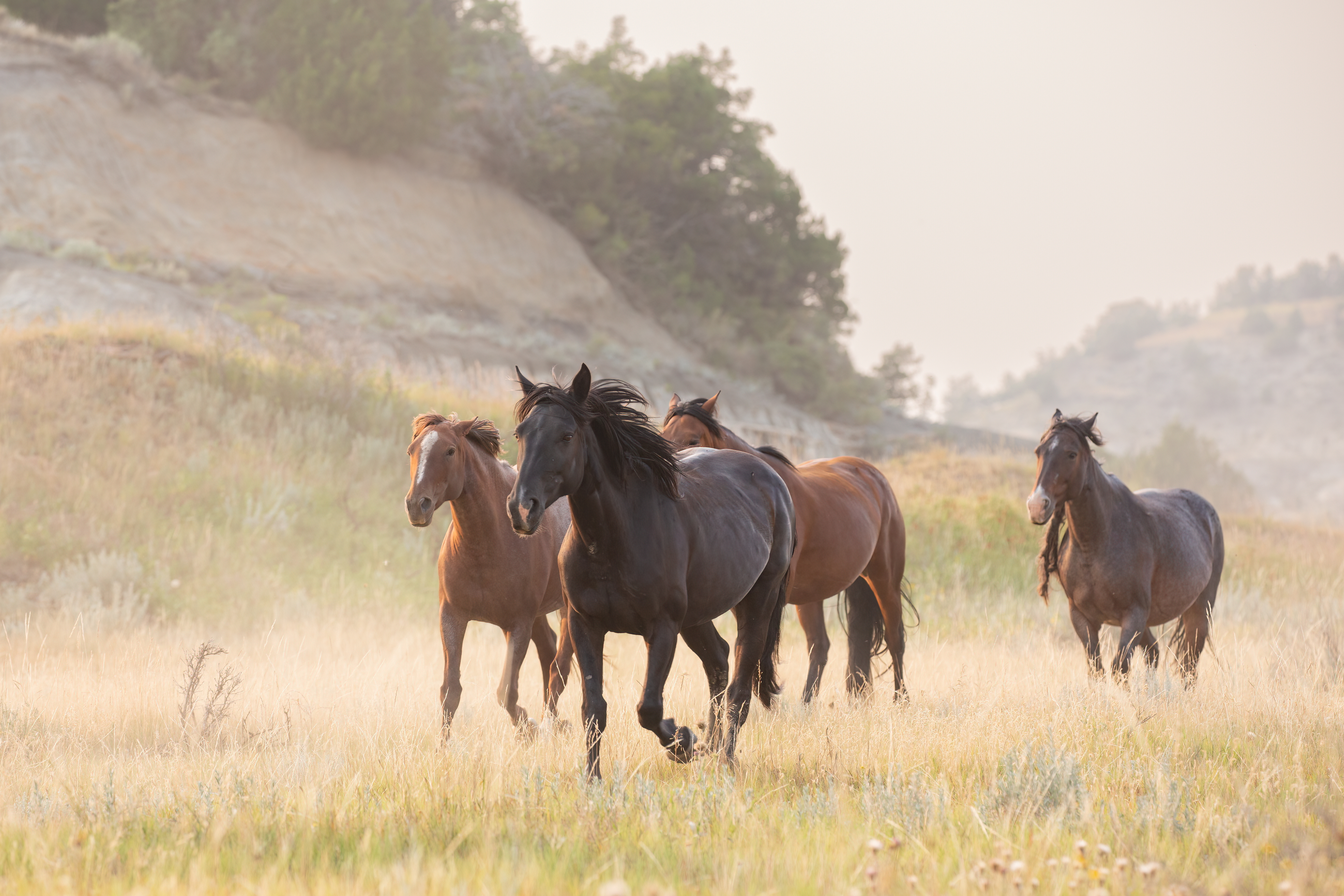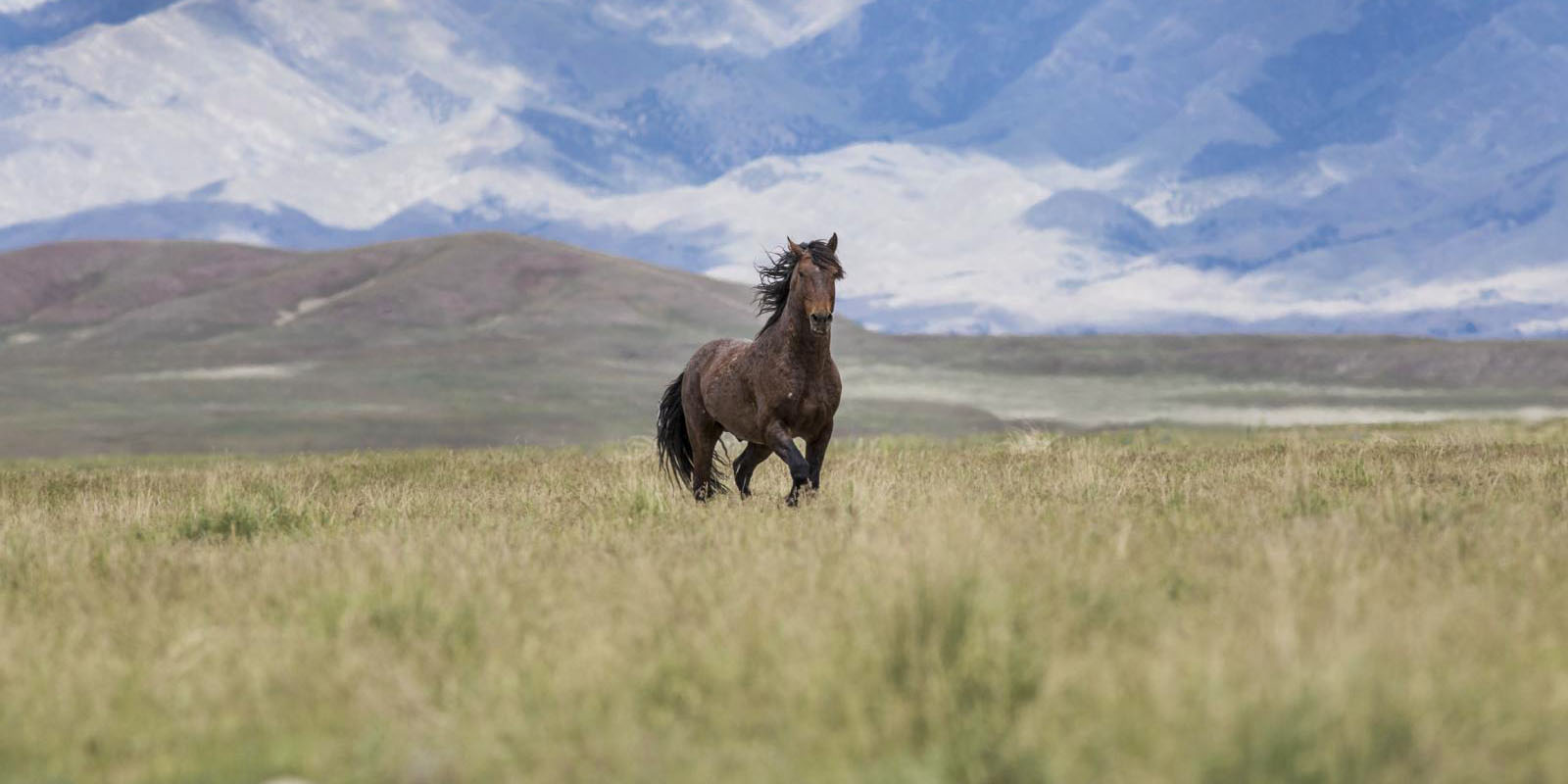(September 29, 2023) This week the National Park Service (NPS) released the much-awaited Draft Environmental Assessment (EA) for a livestock management plan for the wild horses and longhorn cattle in the Theodore Roosevelt National Park (TRNP).
The 93-page document will “assess the potential impacts of continuing current livestock management (No Action Alternative) and implementing one of the action alternatives that would remove livestock from Theodore Roosevelt National Park.”
The EA further states that “the purpose of the proposed action is to address livestock—horse and cattle herds—within the Park, under relevant laws, regulations, policies, and management priorities, including the conservation of native species and natural prairie ecosystem functions.”
The TRNP comprises 70,447 acres of land divided into three separate units—the South Unit, the North Unit, and the Elkhorn Ranch Unit—in North Dakota. Currently, the 200 or so horses who reside in the TRNP are managed by a 1978 Environment Assessment, and the NPS classifies them as livestock even though the agency provides no care for them – as it does for the 9 longhorn cattle; the horses fend for themselves alongside the bison, elk, and other wildlife; and scientific evidence shows that wild horses are a native species.
As in its December 2022 Scoping Notice, the NPS has presented three Action Alternatives “related to livestock and nonnative and exotic species within parks” in this Draft EA.
ALTERNATIVE A: NO ACTION
Alternative A, the no action alternative, is a continuation of current management. Stewardship of the demonstration herds would continue under current management practices with a herd size objective of 35–60 horses and up to 12 cattle.
Note: As recommended by Dr. Gus Cothran, an equine geneticist, a minimum of 150 horses is needed to ensure a healthy and genetically viable wild horse herd.
ALTERNATIVE B: EXPEDITED REDUCTION OF HERDS TO NO LIVESTOCK
Under Alternative B, active capture, handling, and removal of horses and cattle would occur to reduce the herd sizes to zero in an expedited fashion. This action would occur within two years of implementation.
ALTERNATIVE C: PHASED REDUCTION OF HERDS TO NO LIVESTOCK
Under Alternative C, active capture, handling, and removal of horses and cattle would occur to reduce the herd sizes to zero, but with a phased approach for horses. After capture, a representative subset of nonreproductive (chemically or surgically contracepted) horses would be returned to the TRNP to live out their lives. This action would occur over 10 years or longer.
Note: The 2022 Scoping Notice designated this Alternative as the “Proposed Action.”
Throughout the spring and summer, numerous stakeholders – including North Dakota Doug Governor Burgum, U.S. Senator John Hoeven, the United Tribes of North Dakota, the North Dakota State Legislators, the North Dakota Department of Tourism, the City of Medora, and the Medora Foundation – as well as most of the 19,000 plus followers who submitted comments on the Scoping Notice requested that the NPS maintain a genetically viable wild horse herd in the TRNP.
Despite such support, the NPS dismissed an Alternative that would Allow for a Minimum of 150 Horses in the Herd to Maintain Genetic Diversity. As the EA explains,
A decision was made in the 1960s to limit herd sizes in the Park to approximately 40 horses in the South Unit. Based on the analysis of impacts from horses in the Park, the 1978 EA selected an alternative to maintain the horse herd at 35–60 head (NPS 1978). An alternative to manage for a herd of 150 horses would not fall within the allowable numbers of horses identified in the EA. This alternative would continue management that is out of alignment with NPS priorities to maintain the native prairie ecosystem. It also would not meet the project’s purpose and need, because it would not address livestock’s impacts on natural and cultural resources or comply with relevant laws, regulations, and policies. Therefore, it was not brought forward for further analysis.
In response to the recent release of the Draft EA, Governor Burgum and Senator Hoeven have issued press releases encouraging the NPS to keep wild horses in the TRNP, stressing their economic, historical, and cultural importance to the state. Once again, Governor Burgum reiterated the state’s commitment to collaborate with the NPS to preserve wild horses in the TRNP. Additionally, Senator Hoeven “secured a provision in the Senate’s Fiscal Year (FY) 2024 Interior funding legislation, which has been approved through the Senate Appropriations Committee, calling on NPS to maintain the wild horse herds consistent with the period when Theodore Roosevelt was a rancher in North Dakota.”
The NPS has canceled the originally planned virtual meeting on Tuesday, October 3, and will reschedule it sometime in the future.
Stay tuned for more AWHC updates.


